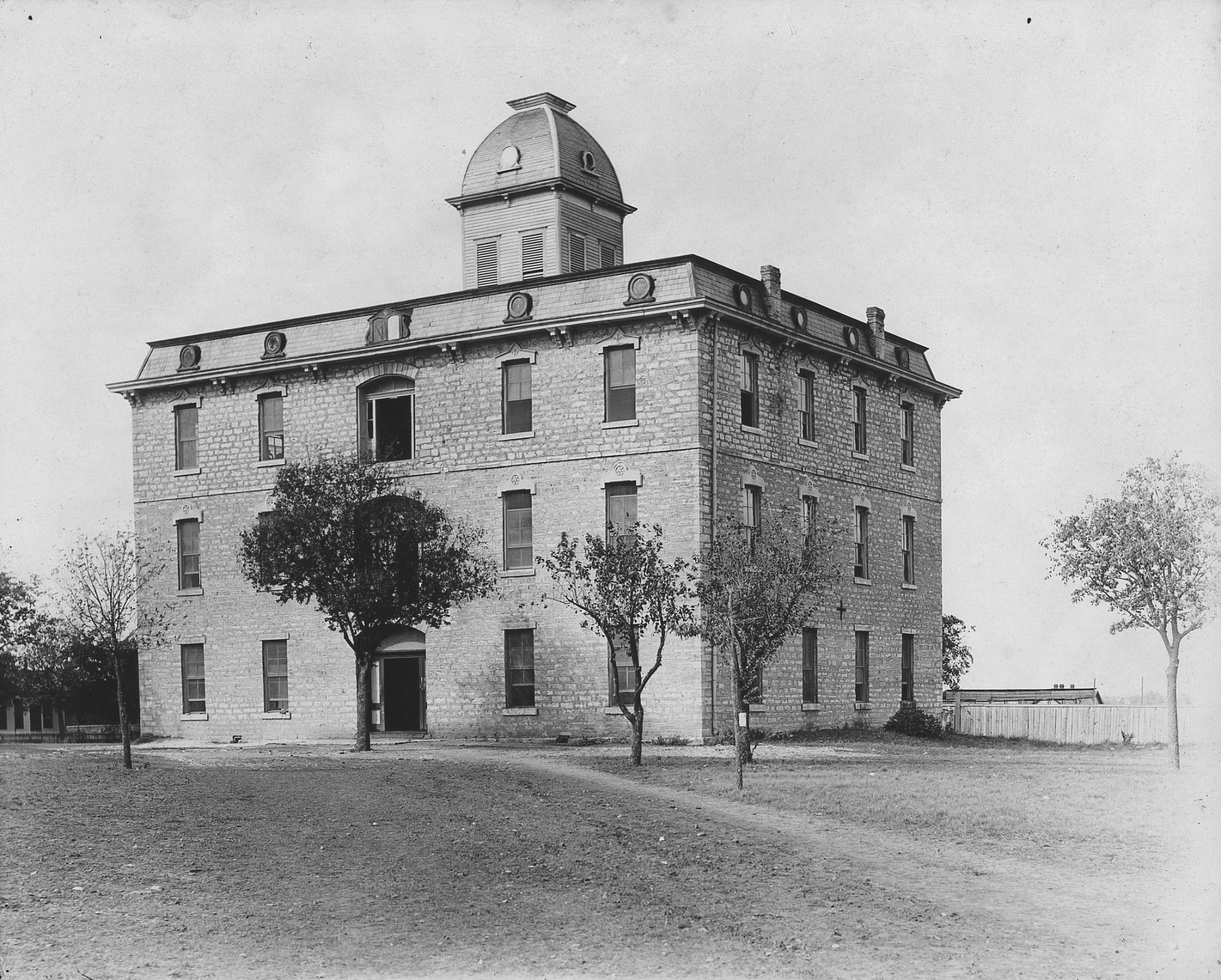Emily Higgs, Special Collections Intern
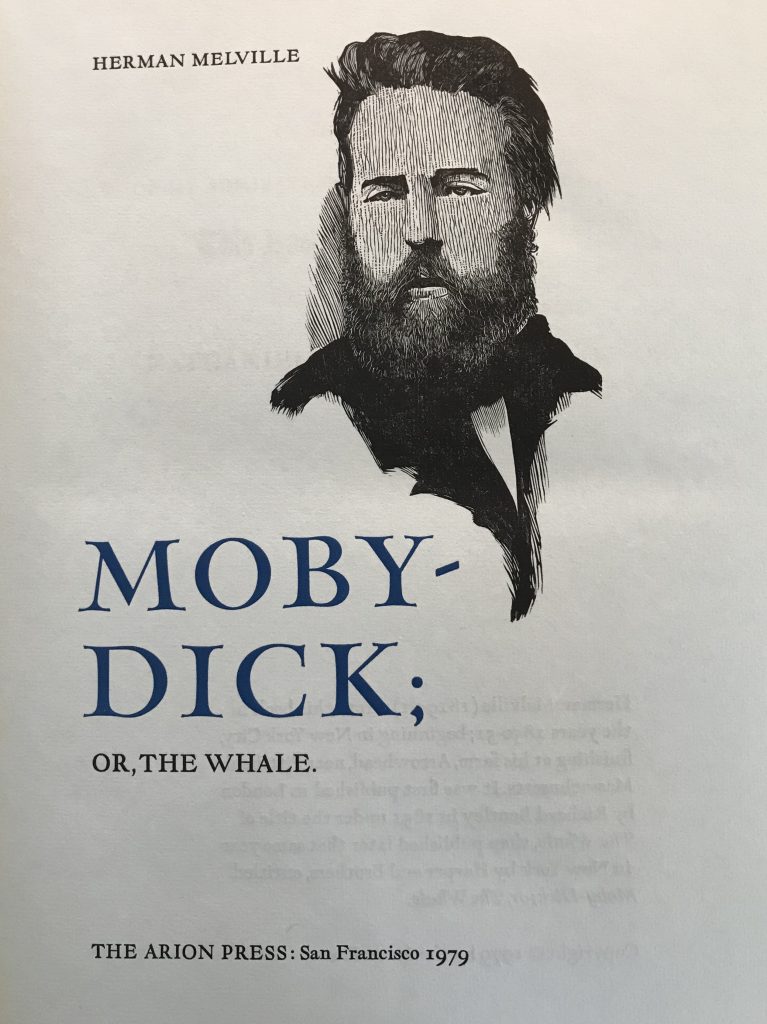
Moby-Dick ; or, The whale, 1979
If you ask me what my favorite book is, I have two answers: my favorite “book-story” is Middlemarch by George Eliot, but my favorite “book-object” is the 1979 Arion Press edition of Moby-Dick. While I’ve never actually read Moby-Dick (sorry, Melville!) – this work for me represents unparalleled craftsmanship, my introduction to our rare book collection at Southwestern University, and my first professional exercise in descriptive bibliography.
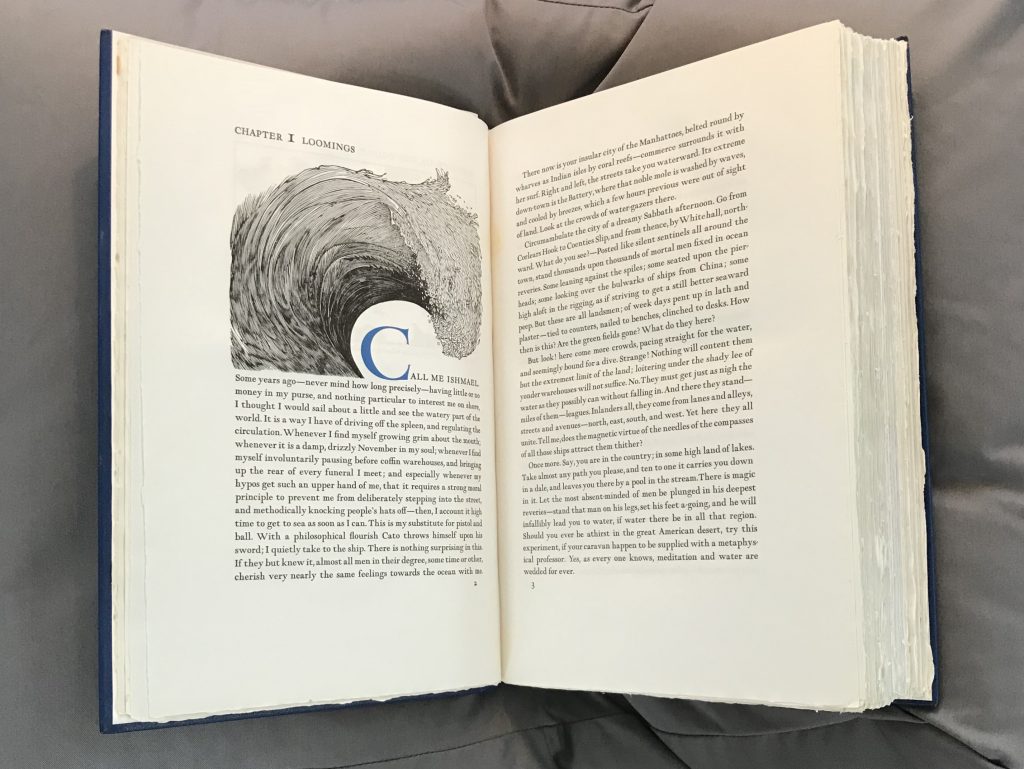
Arion Press, located in San Francisco, is one of the foremost fine press publishers in the United States. Founded by Andrew Hoyem in 1974, Arion specializes in small print runs of highly illustrated books. The Arion Press 1979 edition of Moby-Dick, or The Whale by Herman Melville, consisted of 265 copies and took over a year to print. The craftsmanship is simply stunning: the type is handset Goudy Modern with Leviathan Titling, which was designed specifically for this edition.
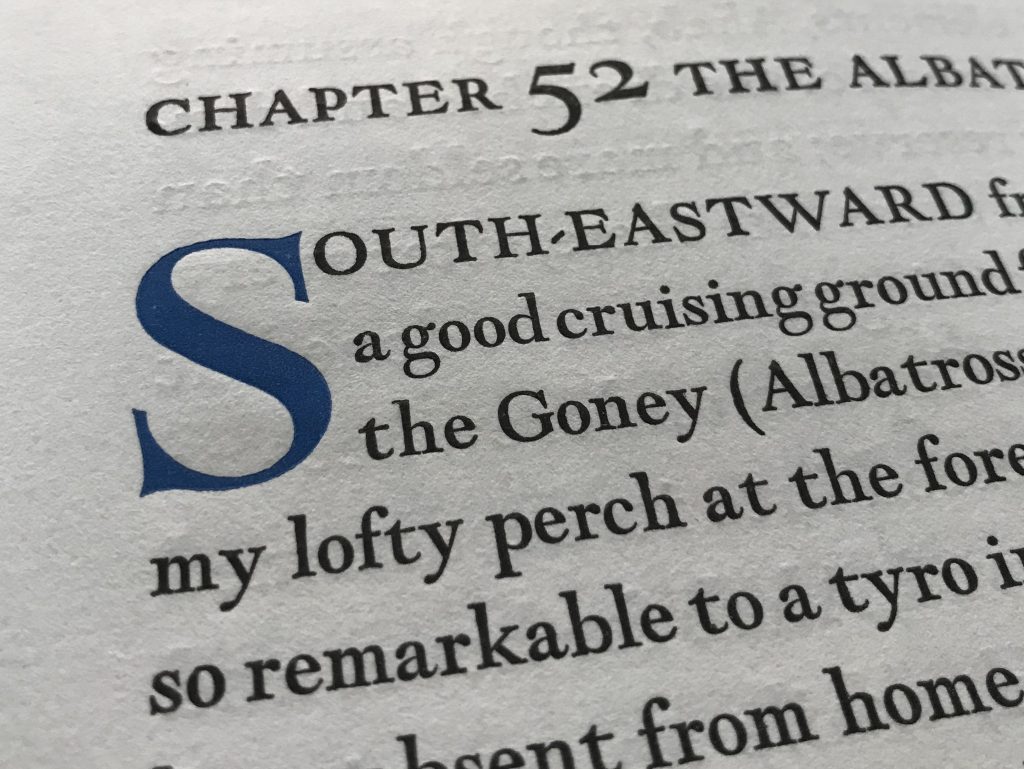
The paper is dampened Barcham Green handmade paper with a whale watermark also made specially for this edition. It is gorgeously bound in full blue Moroccan goatskin with stamped silver lettering, and illustrated with 100 original wood engravings by celebrated artist Barry Moser; these illustrations help readers fill in visual details of the whaling industry in general rather than scenes or plot details from the novel.
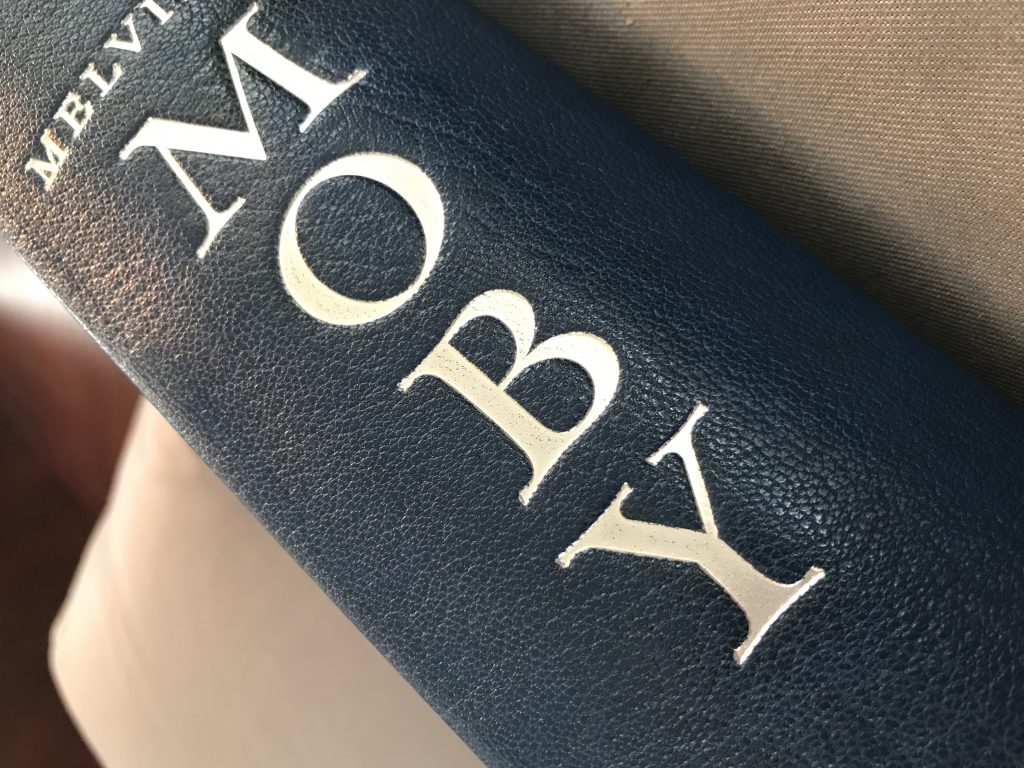
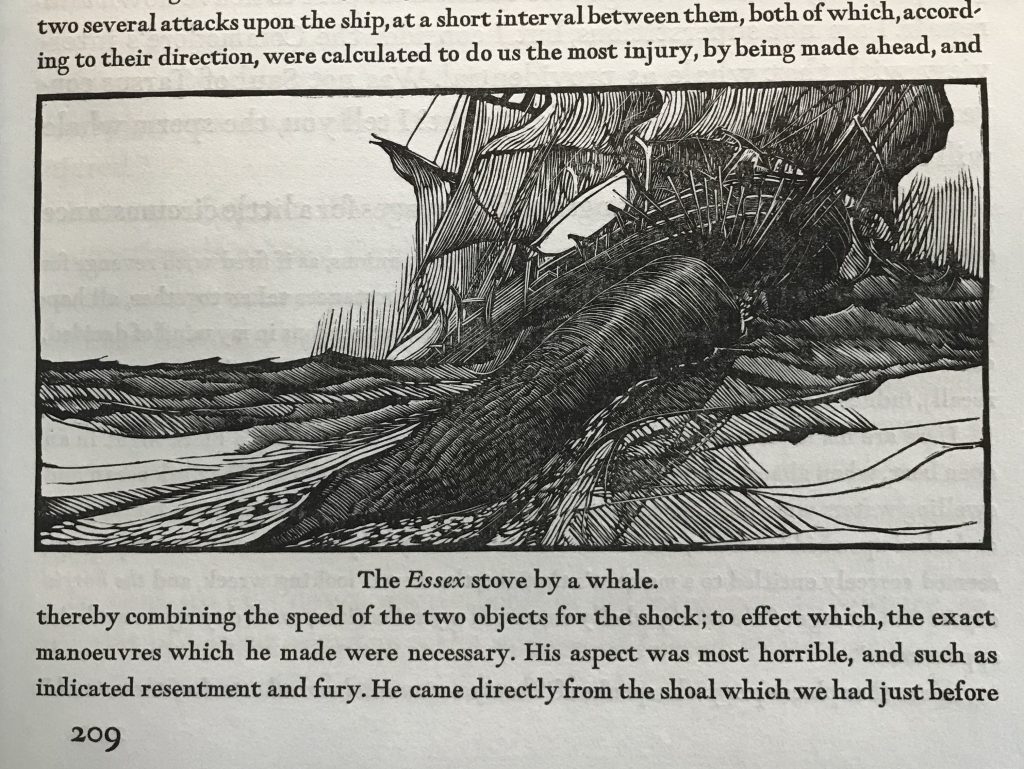
Arion’s Moby-Dick came to Southwestern from the collection of Decherd Turner, longtime director of SMU’s Bridwell Library, director of UT’s Harry Ransom Center, and accomplished book collector. Turner was a generous donor to Southwestern Special Collections; from Turner, we acquired all of our Arion Press books and our leaf collection, which includes a printed book of hours, a Kelmscott Press printed sample, and two pages from Aldus Manutius’ printing of Aristotle’s works.
This book was also my first foray into reference work and bibliographic description in Special Collections. When I started my internship here, we were in-between scheduled exhibitions and had an empty case in the foyer of the reading room. To help me get to know the collection and try my hand at composing label text, Jason tasked me with choosing an item to display in this case for a few weeks. Remembering a large, beautiful book that was shown to me during my post-interview tour of Special Collections, I gravitated to Moby-Dick.
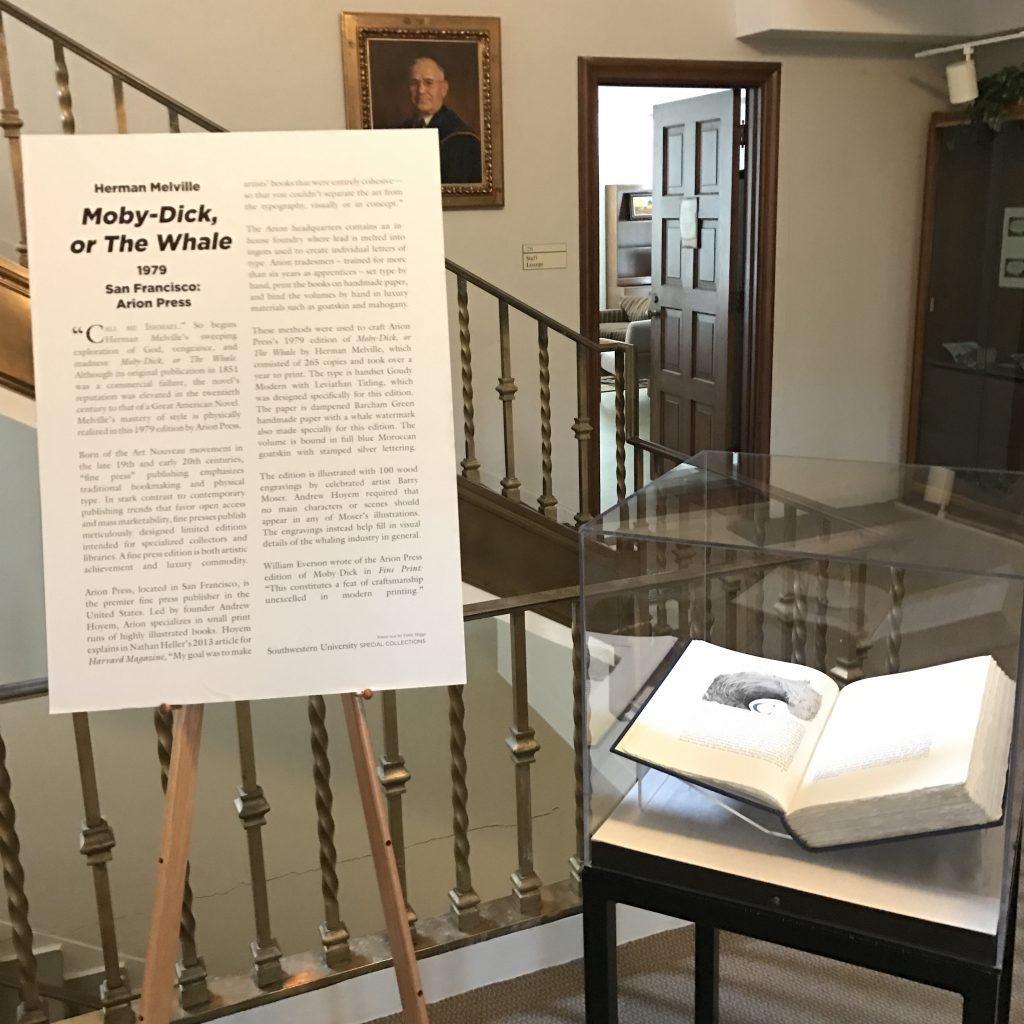
Special Collections at Southwestern University frequently uses similar tasks via social media to introduce student workers to collection items and rare book reference sources. Jason Dean and Emily Grover write in their 2017 RBM article, “Social Media as Entrée into Special Collections Reference Works”:
With support and in the right circumstances, students discover not only the “how” and “why” of bibliographies and reference resources (how and why to use them), but also the potentially transformative knowledge they now have within their grasp—knowledge that applies not only to books and book history, but also to their own interests as burgeoning scholars.
A year later, I often babble about the beauty of Moby-Dick and still remember the particularities of the type, paper, and binding. This task, my first as an intern at Southwestern, helped ease me into conducting bibliographic research with specialized reference sources in a way that also enhanced my personal connection to our collection at Southwestern University.
